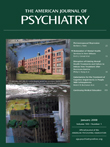Michael Blumenfield and James Strain are synonymous with the field of psychosomatic medicine. Both have been leaders in the field for decades. The two have teamed up to edit a comprehensive textbook authored by an international group of consultation-liaison psychiatrists. The list of authors is a “Who’s Who” of psychosomatic medicine. The first chapter, “Psychosomatic Medicine: History of a ‘New’ Subspecialty,” by Don Lipsitt, is the most comprehensive account of the field to date. From this chapter the reader learns that the term “psychosomatic” was first used in 1818 by the German physician Johann Christian August Heinroth. The reader also learns that Heinroth’s tripartite theory of the mind, which he proposed to explain the concept of inner conflict, antedated and influenced Sigmund Freud’s theories. The chapter traces the various people, institutions, and concepts influencing the development of psychosomatic medicine and consultation-liaison psychiatry through the 19th, 20th, and 21st centuries. Those who established the field and their insightful ideas are vividly brought to life. Graeme Smith’s chapter follows with a brief review of consultation-liaison psychiatry in other countries.
The book is a compendium of research studies and is filled with a wealth of information about the many conditions that are encountered in clinical work. It is also a thoughtful review of the controversy consultation-liaison psychiatrists deal with every day. The chapters by Drs. Berrios and McHugh left me pondering the dilemma involved in understanding what patients’ symptoms mean and how much or how little a diagnostic decision guides how I proceed with each case. I particularly enjoyed John Streltzer’s chapter, “Implications of Culture,” which reminds psychiatrists how important it is to attempt to understand all the cultural expectations that impact patients, and how invisible these expectations are unless we think to ask about them.
One interesting feature of the book is its division into chapters that focus on physical conditions (e.g., cancer, renal disease, neurological disease, and transplantation), psychiatric conditions (e.g., anxiety, suicidality, substance abuse, and dementia), and special topics (e.g., sexuality, ethics, psychotherapy, and drug interactions). One could argue with where individual chapters are placed, but the overall effect allows readers to easily pick and choose what they want to learn. As with any book that attempts to cover everything, some of the chapters are extremely comprehensive and some are less so. For example, the chapter on suicidality reviews the data on risk of suicide, presents strategies for discussing the topic with patients and their families, and emphasizes the need to protect patients who may be at risk for self-harm. The chapter does not mention a practical fact which differentiates general hospitals from psychiatric hospitals, i.e., that the most likely method of a suicide attempt is through the window, and windows in general hospitals are typically not barred or screened. The practical significance of this information is obvious: patients in the general hospital setting should not be near windows, and windows should be checked to insure they cannot be fully opened. The final section of the chapter, on physician-assisted suicide, is inadequate for a textbook on psychosomatic medicine. It is less than a column in length and has only three references. This important topic deserves more attention in this type of a textbook. In contrast, the two chapters on alcoholism and substance abuse are quite complete and contain useful algorithms for treating the disorders, as well as information on the withdrawal syndromes commonly seen in the general medical setting.
It is not surprising that this book also contains software and a DVD. James Strain was one of the pioneers in the use of technology in consultation-liaison psychiatry. The accompanying software allows readers to explore the use of a system in the clinical setting (Micro-Cares ™ ). There is also a literature search program for the references in the textbook, complete with abstracts and citations. It is a vast database, limited only by the fact that it is not completely up-to-date; naturally textbooks cannot reference the most recent literature. The DVD solves a basic problem for those who own textbooks, i.e., how the textbook can be in two places at once. As the DVD contains the complete contents of the book, readers can keep the textbook in the office or library and use the DVD at home or in another office. The PowerPoint slides provided for each chapter are rather basic but provide an excellent start for someone preparing a lecture on the topic. There are also self-examination quizzes on the DVD on the information in each chapter. The quizzes are not as challenging as a true study guide, but they test the main points of the material. The “study” mode and “test” mode allow readers to use the questions as a guide, with answers provided in the study mode and not provided in the test mode. In the text itself, tables and case illustrations make the information accessible and lively. These features make the book very useful for medical students and residents.
Dr. Lipsitt’s chapter notes that in 2003 psychosomatic medicine became the seventh subspecialty approved by the American Board of Medical Specialties. This textbook, published in 2006, was not available to the first group of psychiatrists who trained in fellowships accredited by the Accreditation Council for Graduate Medical Education. Now that the book is available, it joins other excellent texts in consultation-liaison psychiatry and psychosomatic medicine to augment fellowship training. This is a volume for all students of the field, not just those in training. It is a book that consultation-liaison psychiatrists will want for their personal and/or hospital libraries.

